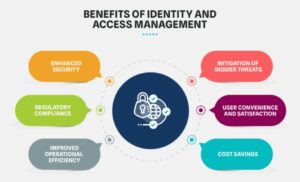
Cloud Computing is the delivery of computing services—such as servers, storage, databases, networking, software, and analytics—over the internet (“the cloud”). Instead of owning and maintaining physical data centers or servers, organizations can access these resources on-demand, typically through a pay-as-you-go model.
What is Cloud Computing?
Cloud Computing is the on-demand availability of computer system resources, especially data storage and computing power, without direct active management by the user. Large clouds often have functions distributed over multiple locations, each location being a data center.
How Cloud Computing Works:
1. Infrastructure as a Service (IaaS):
Provides virtualized computing resources over the internet. Examples include Amazon Web Services (AWS) EC2, Microsoft Azure, and Google Cloud.
2. Platform as a Service (PaaS):
Offers hardware and software tools over the internet, enabling developers to build and deploy applications. Examples include AWS Elastic Beanstalk and Google App Engine.
3. Software as a Service (SaaS):
Delivers software applications over the internet, on a subscription basis. Examples include Salesforce, Microsoft Office 365, and Dropbox.
Integration with AI:
Cloud computing plays a crucial role in the advancement of Artificial Intelligence (AI) by providing the necessary computational power, storage, and flexibility for developing, training, and deploying AI models. Here’s how:
- Scalability: AI models, particularly those based on deep learning, require massive computational resources and data processing capabilities. Cloud platforms allow organizations to scale their computing power based on demand, making it easier to train complex AI models.
- Data Storage and Management: AI thrives on data. Cloud computing offers vast and scalable storage solutions to handle large datasets necessary for training AI models. Services like AWS S3, Google Cloud Storage, and Azure Blob Storage enable efficient data management.
- AI as a Service (AIaaS): Many cloud providers now offer AI and machine learning services as part of their offerings. These include pre-trained models, machine learning frameworks, and tools that make it easier for organizations to integrate AI into their applications without requiring extensive in-house expertise. Examples include AWS SageMaker, Google AI Platform, and Azure Machine Learning.
- Cost Efficiency: By leveraging cloud infrastructure, organizations can avoid the high costs associated with purchasing and maintaining physical hardware for AI projects. The cloud’s pay-as-you-go model allows for cost-effective experimentation and development of AI solutions.
- Global Accessibility and Collaboration: Cloud computing enables global teams to collaborate on AI projects by providing access to shared resources and data from anywhere in the world. This fosters innovation and accelerates the development and deployment of AI applications.
Applications of AI and Cloud Computing:
- Healthcare: AI-powered diagnostics and personalized medicine are supported by cloud computing resources that process and analyze vast amounts of medical data.
- Finance: AI models for fraud detection and financial forecasting are developed and deployed using cloud-based platforms.
- Retail: Cloud-based AI tools help retailers personalize customer experiences and optimize supply chain operations.
- Automotive: Autonomous vehicles rely on cloud-based AI for real-time data processing and decision-making.
Cloud computing provides the essential infrastructure, flexibility, and cost-efficiency required to unlock the full potential of AI, enabling businesses to innovate and transform various industries.
CLOUD COMPUTING ELEMENTS
A hybrid computing model enables an organization to leverage both
public and private computing services to create a more flexible and cost-effective computing utility:
● The public cloud is a set of hardware, networking, storage, service, and interfaces owned and operated by a third party for
use by other companies or individuals.
● A private cloud is a set of hardware, networking, storage,
service, and interfaces owned and operated by an organization
for the use of its employees, partners, and customers.
● In a hybrid cloud environment, an organization combines services and data from a variety of models to create a unified,
automated, and well-managed computing environment.
Whether your cloud is public, private, or hybrid, you’ll need a cloud provider that provides elasticity, scalability, provisioning. standardization, and billed usage. Elasticity is important because it means that you are able to use a service for a long or short period of
time based on need. You can add more services from a self-service portal rather than wait for IT to do the heavy lifting for you. Increasingly, as companies begin to understand that they will use a combination of different platforms to meet different business needs. the hybrid cloud will become the foundation for computing. The advent of the hybrid cloud will also help redefine the purpose and use of the traditional data center as wel.
One of the fundamental differences between cloud computing and traditional computing is the way a cloud is designed to manage resources. Whereas the data center is designed to manage applications, the cloud is intended to manage a pool of resources. A pool of resources is precisely what it sounds likea set of shared,
configured services that are independent of physical location.
For example, suppose you are a cloud provider. You do not want customers to have to select one server or one storage system; rather, the customer is abstracted from that idea. Instead, the customer simply says I need some more storage, and those storage resources
are pooled together from various physical systems to create a set of resources. Customers never know which storage system they are
accessing. To make resource pooling work, it’s important that each element that is pooled be written with service-oriented constructs in
mind, This means that each resource is written as an independent service without dependencies and with welldefined interfaces.
EXPLORING HYBRID CLOUD DELIVERY MODELS
Four delivery models are used to create a hybrid cloud environment. Some of these models will be used as stand-alone capabilities,whereas others will be intertwined to meet a business goal:
- The Infrastructure as a Service Delivery Model: Infrastructure as a Service (laaS) is the virtual delivery of computing resources in the form of hardware, networking, and storage services. It may
also include the delivery of operating systems and virtualization technology to manage the resources. It can be the most cost effective model because it offers customers basic computing or storage capability in an elastic model. In an elastic model, it’s possible to use some storage, for example, and to stop using and paying for that storage when the task is completed. These infrastructure services can be based on a public service such as Amazon.com or RackSpace, or they can be designed as an
internal utility for use inside an organization. The fact that avendor or an IT organization can optimize these services by customizing both the operating system and the underlying services to support a specific type workload (such as email) makes it easy to support a large number of users or customers with very low cost. - The Platform as a Service Delivery Model: The Platform as aService (PaaS) delivery model includes infrastructure services combined with development tools and middleware that is built into the environment. It, therefore, provides a way for development organizations to build and deploy their own applications in a more flexible manner. In a hybrid environment, PaaS can be combined with on-premises development approaches. PaaS is dependent on combining with laaS. Paas supports the ability to abstract complexity away from the developers so that there is consistency and predictability in the development and deployment of software.
- The Software as a Service Delivery Model: The Software as a Service (SaaS) delivery model includes both laaS and PaaS. It’s the development of packaged software services that are built in and live in a cloud environment. These services need to be combined with data and other service elements from other clouds and from data centers.
- Business Process as a Service Delivery Model: Business Process as a Service (BPaaS) is a set of services that works in combination with laaS, PaaS, and SaaS, as well as application services that run in data centers. Basically, BPaaS is a codification of processes needed to execute a business policy. BPaaS can be anything from a simple credit-checking service to a complex business process for managing end-to-end commerce transactions. It’s imperative for companies to be able to leverage public, private, and data center services to implement business policies and automate workflow.
HYBRID CLOUD FOUNDATIONAL ELEMENTS
The hybrid cloud requires foundational elements to make a hybrid model work in the real world. Although there are many issues and technical considerations when using the hybrid cloud, understanding the following elements is particularly important:
- Virtualization services: It’s not surprising that many companies have taken the time to streamline their data centers through
technologies such as server virtualization. In essence, virtualization decouples the software from the hardware. In decoupling, the software is put into a separate container so that its isolated from the underlying operating system. With the use of virtualization, applications can be managed on servers in a more efficient manner. - Service orientation: Organizations that have invested in creating business services that are encapsulated, and therefore decoupled from underlying business applications, are well positioned for hybrid computing. These services include well defined interfaces so they can be integrated with other services to create value. These services, whether a simple business process or a codified way to manage a set of data elements, can provide the way to integrate services from different origins into a hybrid cloud environment.
- Service management: Automation, optimization, and workload management are keys to making a hybrid cloud environment operational. Therefore, companies that are looking at the hybrid cloud need to focus on how a combination of services can be brought together t a well-functioning system.
These foundational elements form the underlying infrastructure that supports a company’s ability to integrate data, applications, and processes acrOsS multiple environments For the hybrid cloua to interfaces are needed so that operationally effective, standardized interfaces services built from a variety of environments can be linked togeui
when needed. All these cloud sevices must include a meuio metering based on use. Clearl, public cloud service companies will meter and bill you based on what you use. In internal clouds, the Organization needs to keep track of usage to make sure resources are used appropriately across the organization.
Cloud Computing need: Intel Cloud Migration
Forms of Cloud Computing
-
Infrastructure-as-a-Service (IaaS)
- Provides virtual server instances with unique IP addresses and blocks of storage on demand
- Amazon Web Services
- Provides virtual server instances with unique IP addresses and blocks of storage on demand
-
Platform-as-a-Service (PaaS)
- A set of software and product development tools hosted on the providers infrastructure
- GoogleApps
- Salesforce.com
- A set of software and product development tools hosted on the providers infrastructure
-
Software-as-a-Service (SaaS)
- The vendor supplies the hardware infrastructure, the software product and interacts with the user throug a front-end portal.
- Microsoft Office Live,
- The vendor supplies the hardware infrastructure, the software product and interacts with the user throug a front-end portal.
Calling on Cloud Computing
- How much storage do you have now?
- How much would you like in the future
- How much data do you have? Do you expect this to increase?
- Do you have the funds to purchase hardware to accommodate for your growing data needs? (if not, Cloud)
AWS Service Overview
✅ What is AWS?
AWS is a broadly adopted cloud platform which offers several On-Demand operations like compute power, database storage, content delivery etc. to help corporates scales and grow.
✅ IT provides services over the internet







